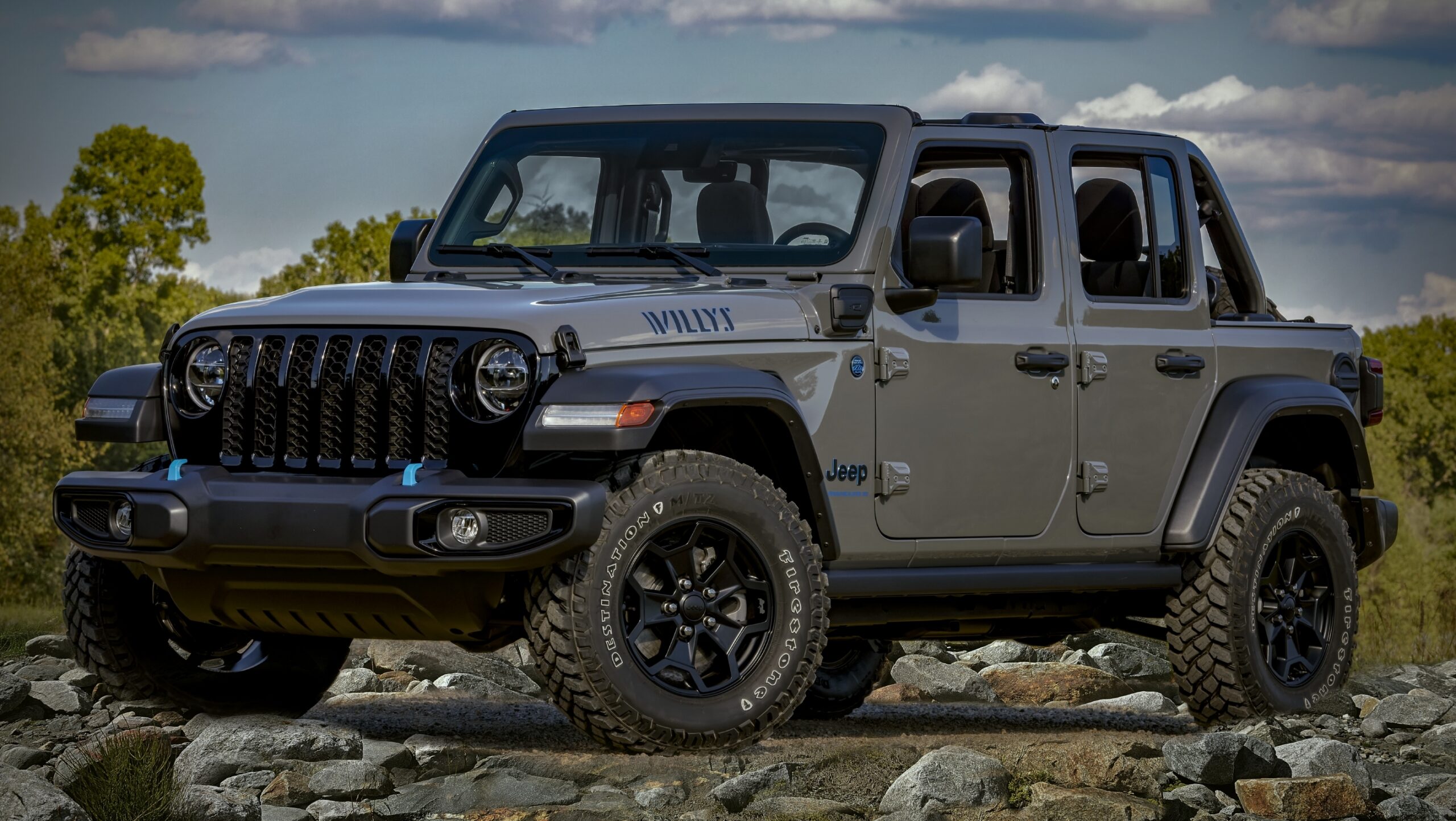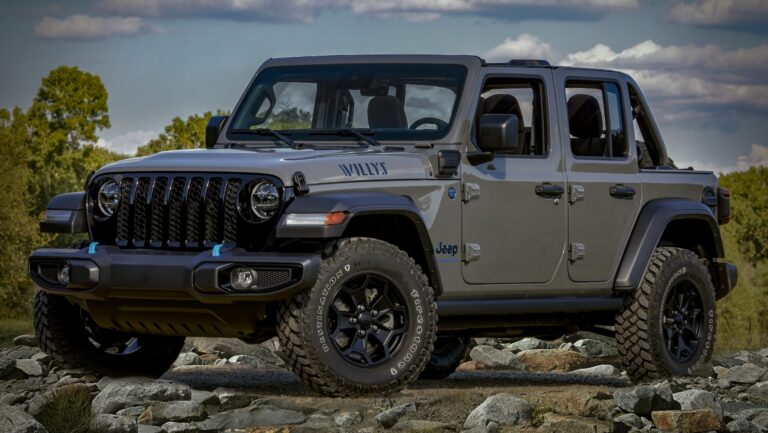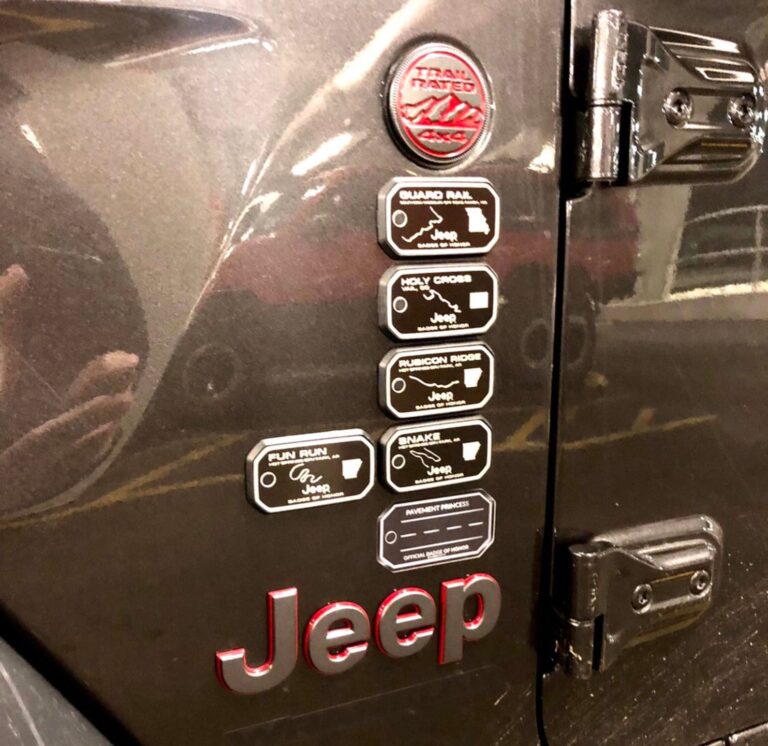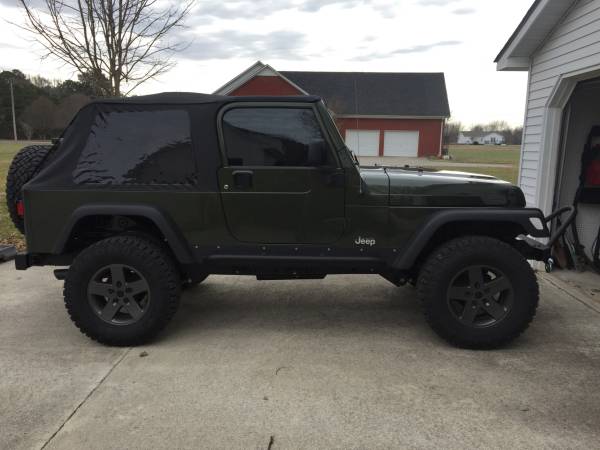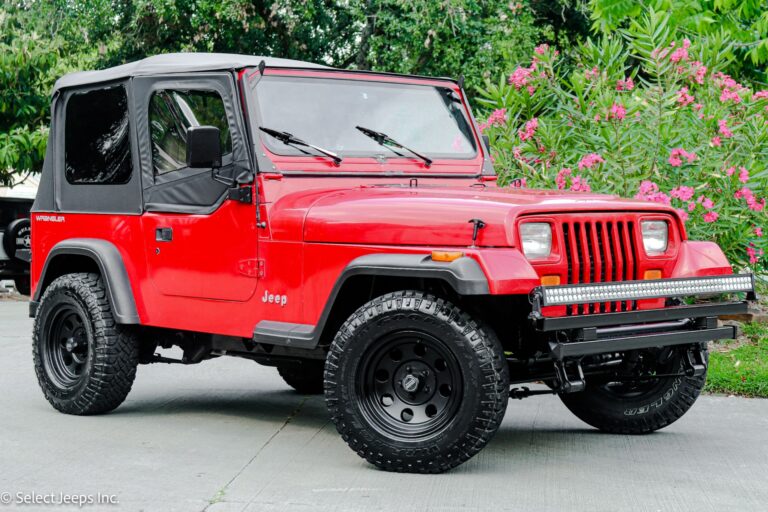Jeep Bike For Sale: Your Ultimate Guide to Off-Road Cycling Adventures
Jeep Bike For Sale: Your Ultimate Guide to Off-Road Cycling Adventures jeeps.truckstrend.com
The open road, the challenging trail, the freedom to explore beyond the pavement – these are the promises whispered by the very name "Jeep." But what if that spirit of rugged adventure could be distilled into a two-wheeled machine? Enter the "Jeep Bike." More than just a bicycle, a "Jeep Bike" embodies durability, versatility, and the capability to conquer diverse terrains. Whether you’re an avid outdoors enthusiast, a hunter, a commuter seeking a robust ride, or simply someone who appreciates a go-anywhere aesthetic, understanding the market for a "Jeep Bike for sale" is your first step towards unlocking unparalleled cycling adventures.
This comprehensive guide will delve into everything you need to know about finding, evaluating, and purchasing a Jeep Bike, ensuring you make an informed decision that perfectly aligns with your adventurous spirit and practical needs.
Jeep Bike For Sale: Your Ultimate Guide to Off-Road Cycling Adventures
What Exactly is a "Jeep Bike"? Defining the Off-Road Spirit on Two Wheels
The term "Jeep Bike" isn’t strictly confined to a single, officially licensed product line, though that is certainly a significant part of the market. Instead, it encompasses a broader category of bicycles that share the core attributes of the iconic Jeep brand: ruggedness, off-road capability, and a distinctive, powerful presence.
Primarily, when people refer to a "Jeep Bike," they are often thinking of:
- Officially Licensed Jeep E-Bikes and Mountain Bikes: The most direct interpretation. Companies like QuietKat have partnered with Jeep to produce high-performance electric fat-tire bikes designed for extreme off-road conditions, hunting, and utility. These bikes carry the official Jeep branding and are engineered to reflect the brand’s legendary capability. They typically feature powerful motors, long-range batteries, robust suspension, and oversized fat tires.
- Fat-Tire Bikes with a "Jeep" Aesthetic: Many non-licensed bikes, particularly fat-tire electric or manual bicycles, are often colloquially referred to as "Jeep Bikes" due to their similar design philosophy. They boast wide, knobby tires (typically 4 inches or wider), sturdy frames, and often full suspension, making them exceptionally capable over sand, snow, mud, and rocky trails. Their imposing size and rugged build evoke the go-anywhere attitude associated with Jeep vehicles.
- Heavy-Duty Utility Bikes: Beyond purely recreational off-roading, some "Jeep Bikes" are designed with utility in mind, featuring integrated racks, powerful lights, and durable components suitable for hauling gear, commuting through rough urban environments, or supporting specific outdoor activities like hunting or fishing.

In essence, a "Jeep Bike" is a declaration of intent: a bicycle built not just for paved paths, but for challenging the limits of where a bike can take you.
Why Consider a "Jeep Bike"? Unpacking the Benefits
The appeal of a "Jeep Bike" extends far beyond its imposing looks. These machines offer a unique blend of advantages that make them ideal for a wide range of riders and uses:
- Unrivaled Off-Road Capability: This is the primary draw. Fat tires provide exceptional traction and flotation over soft surfaces like sand, snow, and mud, while robust suspension systems (often full suspension) absorb shocks from rocky trails and uneven terrain, ensuring a smoother, more controlled ride.
- Exceptional Durability and Ruggedness: Built to withstand demanding conditions, "Jeep Bikes" typically feature reinforced frames, heavy-duty components, and high-quality construction. They are designed for abuse and built to last, making them a reliable companion for any adventure.
- Versatility Across Terrains: While excelling off-road, many "Jeep Bikes" are surprisingly versatile. Their powerful electric motors (on e-bike variants) can flatten hills on commutes, and their comfortable ride quality makes them suitable for long excursions, whether on gravel paths or city streets.
- Power and Extended Range (for E-Bikes): For electric "Jeep Bikes," the integrated motor provides significant assistance, allowing riders to tackle steeper climbs, cover greater distances with less fatigue, and carry heavier loads. Long-lasting batteries ensure extended adventures.
- Unique Aesthetic and Brand Appeal: For fans of the Jeep brand, an officially licensed "Jeep Bike" offers a way to extend their passion for adventure vehicles to their cycling pursuits. Even non-licensed fat bikes often share a similar rugged, adventurous look that appeals to many.
- Enhanced Stability and Comfort: The wider tires and often larger frames contribute to a very stable ride, instilling confidence, especially for beginners or those navigating tricky terrain. The volume of air in fat tires also acts as an additional form of suspension, enhancing comfort.
Key Features to Look For When Buying a "Jeep Bike"
Navigating the "Jeep Bike for sale" market requires understanding the critical components that define these robust machines. Prioritize features based on your intended use:
- Motor Type and Power (for E-Bikes):
- Hub Motors: Located in the wheel hub, these are often more affordable and simpler.
- Mid-Drive Motors: Positioned at the pedals, these offer better torque, balance, and efficiency, especially for climbing and off-road riding. Look for motors from reputable brands like Bafang, Bosch, or Yamaha, with power ratings typically from 750W to 1500W.
- Battery Capacity and Range: Measured in Watt-hours (Wh), higher Wh means longer range. A typical "Jeep Bike" battery might range from 500Wh to over 1000Wh, offering 30-70+ miles per charge depending on terrain, assist level, and rider weight.
- Tire Size and Type: The hallmark of a "Jeep Bike." Look for fat tires, usually 4 inches wide or more, with aggressive tread patterns for maximum grip. Tubeless compatibility is a bonus for puncture resistance.
- Suspension:
- Front Suspension (Hardtail): A suspension fork at the front absorbs bumps and impacts, common on many fat bikes.
- Full Suspension: Suspension at both the front and rear provides superior comfort and control over extremely rough terrain, making it ideal for aggressive trail riding.
- Frame Material:
- Aluminum: Lightweight, corrosion-resistant, and common for modern bikes.
- Steel: Heavier but more durable and offers a slightly more compliant ride.
- Brakes:
- Hydraulic Disc Brakes: Essential for effective stopping power in all conditions, especially with the added weight and speed of an e-bike. Mechanical disc brakes are an entry-level option but less powerful.
- Gearing: A wide range of gears (e.g., 9-speed, 10-speed, or more) is crucial for tackling varied terrain, from steep climbs to fast flats.
- Integrated Features: Consider integrated lights, fenders, front or rear racks for cargo, and a clear display for e-bike metrics (speed, battery, assist level).
Where to Find "Jeep Bike For Sale" Listings
The market for "Jeep Bikes" is growing, offering several avenues for purchase:
- Official Brand Websites & Dealerships: For officially licensed Jeep e-bikes (like those from QuietKat), the best place to start is their official website or authorized dealer network. This ensures authenticity, warranty, and professional support.
- Specialty E-Bike and Bike Shops: Many local and online bike shops specialize in fat bikes and electric bikes, often stocking models that fit the "Jeep Bike" description. They can offer expert advice, assembly, and servicing.
- Online Marketplaces:
- eBay, Amazon: New and sometimes used models from various manufacturers.
- Craigslist, Facebook Marketplace: Excellent for finding used "Jeep Bikes" at potentially lower prices. Be cautious and arrange in-person inspections.
- Dedicated Cycling Forums/Groups: Niche communities often have classified sections where enthusiasts sell their bikes.
- Outdoor and Hunting Gear Retailers: Given the utility aspect of many "Jeep Bikes," stores catering to hunting, fishing, and outdoor adventure sports may carry specific models.
Buying Guide: New vs. Used "Jeep Bikes"
Deciding between a new or used "Jeep Bike" significantly impacts your budget and overall experience.
Buying New:
- Pros: Full manufacturer warranty, latest technology and features, pristine condition, professional assembly, often includes support and servicing options.
- Cons: Higher upfront cost, depreciation begins immediately.
Buying Used:
- Pros: Significant cost savings, immediate availability, opportunity to find discontinued models, less depreciation once purchased.
- Cons: No warranty (usually), potential hidden issues (wear and tear, damage), requires thorough inspection, may need immediate maintenance/repairs.
Tips for Inspecting a Used "Jeep Bike":
- Check the Frame: Look for cracks, dents, or signs of welding repairs.
- Inspect Components: Check brake pads, chain wear, tire tread, and gear shifting.
- Test the E-Bike System (if applicable): Verify the motor engages smoothly, the battery holds a charge (ask for charging history), and the display functions correctly.
- Suspension Check: Ensure suspension moves smoothly without clunking or excessive play.
- Test Ride: Crucial! Ride the bike on various surfaces, test brakes, shift gears, and listen for unusual noises.
- Documentation: Ask for original purchase receipts, manuals, and service records.
- Meet in a Safe Location: For online marketplace transactions, meet in a public place.
Pricing Considerations and Budgeting for Your "Jeep Bike"
The price of a "Jeep Bike" can vary wildly based on whether it’s officially licensed, its features, and its condition (new vs. used).
- Entry-Level Fat Bikes (Manual): You might find basic, non-electric fat bikes starting from $500 – $1,500. These are manual pedal bikes, offering the fat-tire experience without the motor.
- Mid-Range Electric Fat Bikes (Non-Licensed): Many reputable brands offer electric fat bikes in the $1,500 – $3,500 range. These often feature hub motors, decent battery life, and reliable components.
- Premium Electric Fat Bikes (Non-Licensed): High-end models with mid-drive motors, full suspension, and superior components can reach $3,500 – $6,000+.
- Officially Licensed Jeep E-Bikes (e.g., QuietKat Jeep E-Bike): These premium, purpose-built machines typically start around $5,000 – $7,500+, reflecting their specialized design, powerful components, and brand licensing.
Hidden Costs: Factor in accessories like a helmet, lock, lights, repair kit, and potential future maintenance.
Sample Price Table for "Jeep Bike" Categories
| Category | Price Range (Estimated) | Key Features (Typical) | Ideal For |
|---|---|---|---|
| Manual Fat Bike | $500 – $1,500 | Basic frame, mechanical disc brakes, entry-level gears, no motor, 4" fat tires. | Casual riders, budget-conscious adventurers, snow/sand exploration. |
| Entry-Level E-Fat Bike | $1,500 – $2,500 | Hub motor (500W-750W), basic battery (500-700Wh), front suspension, mechanical or entry hydraulic disc brakes. | Commuting, light trail riding, urban utility, getting started with e-bikes. |
| Mid-Range E-Fat Bike | $2,500 – $4,000 | Hub or mid-drive motor (750W-1000W), better battery (700-900Wh), hydraulic disc brakes, improved suspension. | More serious trail riding, hunting, off-road exploration, longer commutes. |
| Premium/Licensed E-Bike | $4,000 – $7,500+ | Powerful mid-drive motor (1000W-1500W+), large battery (900-1000Wh+), full suspension, high-end components, often official branding. | Extreme off-road, hunting, heavy-duty utility, long-range adventures. |
Note: Prices are estimates and can vary based on brand, specific features, promotions, and market conditions.
Maintenance and Care for Your "Jeep Bike"
To ensure your "Jeep Bike" remains a reliable companion for years to come, regular maintenance is crucial, especially given the demanding environments they often operate in.
- Regular Cleaning: After every muddy or dusty ride, clean the frame, drivetrain (chain, cassette, derailleur), and brakes. A gentle hose and brush, followed by wiping dry, works wonders.
- Chain Care: Keep your chain clean and lubricated to prevent wear and ensure smooth shifting.
- Tire Pressure: Check tire pressure before every ride. Fat tires typically run at lower pressures (5-20 PSI) than road bikes, but correct pressure is vital for performance and puncture prevention.
- Brake Checks: Regularly inspect brake pads for wear and ensure levers feel firm. Adjust or replace as needed.
- Bolt Check: Over time, bolts can loosen due to vibrations. Periodically check all critical bolts (handlebars, stem, wheels, seat post) for tightness.
- Battery Care (for E-Bikes):
- Store in a cool, dry place.
- Avoid fully depleting the battery or leaving it at 0% for extended periods.
- Charge to 60-80% for long-term storage.
- Use only the charger provided by the manufacturer.
- Professional Servicing: Even with diligent home maintenance, a professional tune-up once or twice a year is recommended to check bearings, adjust gears, bleed hydraulic brakes, and inspect the e-bike system.
Challenges and Solutions When Buying a "Jeep Bike"
While exciting, the pursuit of a "Jeep Bike" can present a few challenges:
- Challenge: Weight and Portability. "Jeep Bikes," especially electric fat bikes, are significantly heavier than standard bicycles.
- Solution: Consider how you’ll transport it. You might need a specialized bike rack for your vehicle (often a hitch-mounted rack rated for heavier bikes). If you plan to lift it frequently, factor in its weight.
- Challenge: Cost. High-quality "Jeep Bikes" can be a significant investment.
- Solution: Set a realistic budget and prioritize features. Consider financing options if available. Look for sales or clearance events. Don’t dismiss well-maintained used options.
- Challenge: Finding Specific Models. Officially licensed or niche models might have limited availability.
- Solution: Be patient and cast a wide net. Utilize online alerts for specific models. Contact dealerships directly and inquire about upcoming stock.
- Challenge: E-Bike Regulations. Laws regarding e-bikes (speed limits, motor wattage, where they can be ridden) vary by state, county, and even specific trail systems.
- Solution: Research local regulations before you buy. Ensure the bike you choose complies with where you intend to ride it.
Frequently Asked Questions (FAQ) about "Jeep Bikes"
Q1: Are all "Jeep Bikes" officially licensed by Jeep?
A1: No. While there are officially licensed Jeep e-bikes (e.g., from QuietKat), many bikes colloquially referred to as "Jeep Bikes" are simply fat-tire or rugged electric bikes that embody a similar adventurous spirit and aesthetic, but do not carry the official Jeep branding.
Q2: What’s the typical range of a "Jeep" e-bike on a single charge?
A2: The range varies significantly based on battery capacity, motor power, terrain, rider weight, assist level used, and weather conditions. Generally, you can expect anywhere from 30 to 70+ miles on a full charge for mid-range to premium models.
Q3: Are "Jeep Bikes" street legal?
A3: Most "Jeep Bikes" (especially e-bike versions) are designed to comply with e-bike classifications (Class 1, 2, or 3) that determine their legality on roads and specific trails. Always check your local and state regulations regarding e-bike use, particularly concerning motor wattage and top assisted speed.
Q4: Can I use a "Jeep Bike" for hunting or hauling gear?
A4: Absolutely! Many "Jeep Bikes," especially the officially licensed e-bikes and higher-end fat bikes, are specifically designed for hunting, fishing, and utility. Their powerful motors, cargo racks, and rugged build make them ideal for quietly accessing remote areas and hauling equipment.
Q5: What’s the typical weight capacity of a "Jeep Bike"?
A5: Most "Jeep Bikes" are built to be robust. Rider weight capacity typically ranges from 250 lbs to 350 lbs, with some models offering even higher cargo capacities on integrated racks. Always check the manufacturer’s specifications for the exact weight limit.
Q6: How often do "Jeep Bikes" need maintenance?
A6: Like any bike, regular maintenance is key. Clean the bike after every ride, especially the drivetrain. Check tire pressure and brakes before each outing. A professional tune-up is recommended at least once a year, or more frequently if you ride in extreme conditions.
Conclusion: Embrace the Adventure
The quest for a "Jeep Bike for sale" is more than just a search for a mode of transport; it’s an embrace of adventure, a commitment to exploring beyond the conventional. These robust, go-anywhere machines offer a unique blend of power, durability, and versatility, opening up a world of cycling possibilities – from conquering challenging trails to silently navigating wilderness areas, or simply making your daily commute an exciting journey.
By understanding the different types, key features, where to buy, and how to maintain these exceptional bicycles, you are now equipped to make an informed decision. Whether you opt for an officially licensed powerhouse or a rugged fat bike that embodies the spirit, your "Jeep Bike" promises to be more than just a ride; it’s a gateway to your next great adventure. So, gear up, research wisely, and prepare to unleash the untamed spirit of the "Jeep Bike" on your own terms.
